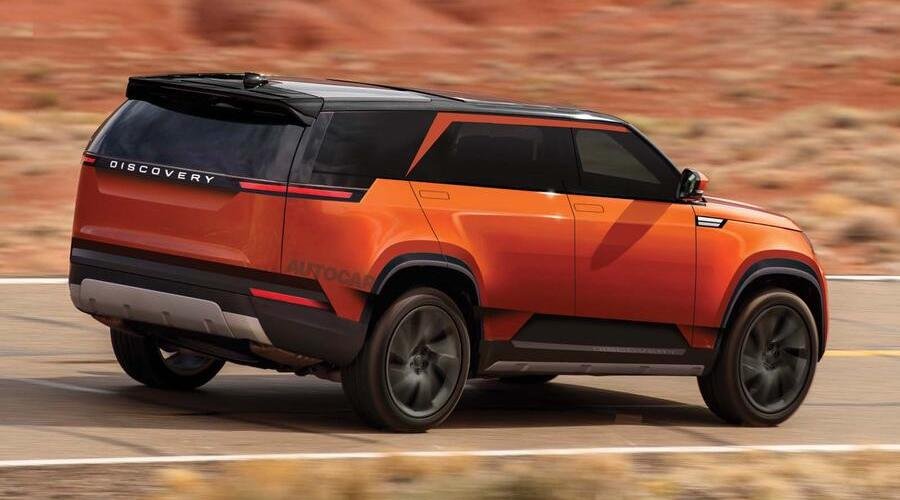JLR will reinvent Discovery to take it out of Defender's shadow

JLR will reinvent the ailing Discovery brand for its sixth generation by repositioning it in its own “unique territory” and moving it away from its Defender sibling, which has been “cannibalising” sales.
The current Discovery has been on sale since 2017, making it the oldest model in the Land Rover stable.
It is also the slowest-selling, notching up only 16,750 global sales last year, almost half that of the Discovery Sport.
Despite the Discovery making up just 4% of JLR’s total sales, the British firm remains committed to bringing it back for another generation and will focus efforts on more clearly defining the Discovery’s positioning around its “family adventures” values.
Discovery and Defender brands boss Mark Cameron told Autocar the repositioning will need to move the Discovery away from its Defender sibling, which offers comparable refinement and space with a broader spread of engines, trims and body sizes.
The Defender’s 110,367 sales in 2023 were more than six times higher than those of its Discovery sibling.
“If you look from a product perspective, Defender came in and sat quite squarely on top of Discovery and cannibalised a lot of that business,” Cameron told Autocar.
JLR will attempt to set Discovery apart by moving it into a new space, Autocar understands, possibly by adopting some MPV design elements. The Volkswagen ID Buzz, for example, has been touted as a potential reference.
A clean-sheet design brief could even spawn something as radically different to today’s model as the Mk1 Range Rover Evoque was from the Range Rover and Range Rover Sport. Discovery will become one of four stand-alone brands alongside Range Rover, Defender and Jaguar.
Becoming its own entity will give the Discovery brand a renewed lease of life, said Cameron, because all four of JLR’s brands are currently unintentionally competing with each other owing to their shared retail footprint.
He said: “Recreating what Discovery stands for, we absolutely have to make sure it sits in a really unique territory.”
JLR is likely to base the next-generation Discovery on its versatile MLA platform, which underpins the current flagship Range Rover and can accommodate both ICE and electric set-ups.
JLR has confirmed plans for electric Land Rovers by 2026 and it is expected that the Discovery 6 will be one of them.
However, the company has recently increased investment into versatile vehicle architectures – from £15 billion to £18bn – in light of fluctuating EV demand and doubled down on the importance of plug-in hybrids as a transitional technology. This raises the possibility that the Discovery will continue to be available with ICE power.
Given the versatility of the MLA platform, JLR may decide to offer the Discovery with a choice of hybrid and electric powertrains, like it is doing with the Range Rover.
The 2025 electric Range Rover will give a strong indication of what to expect technically from a Discovery EV. That car will use an advanced 800V electric architecture for rapid charging and JLR has promised its performance will be “comparable” to that of the existing V8 Range Rover – both on and off road.
Crowning the repositioned Discovery brand will be a new halo model. It is being developed by JLR’s SVO bespoke division, the team responsible for the Defender Octa and Range Rover SV.
Like those cars, the Discovery flagship will have its own new bespoke performance nameplate, as part of JLR’s continued push to put distance between its four brands.
Speaking to Autocar, SVO boss Jamal Hameedi said the car will be positioned with “its own special interpretation of what flagship means” for the Discovery brand.
This design freedom is a result of the division’s clean-sheet approach, which means “we can do whatever we want; we’ve broken the chains of the formula”, said Hameedi.
However, such freedom can be “a little unnerving”, he added, as well as “really exciting… because you can go in completely different directions” from before.
“It is challenging because you’re innovating and creating as you go along,” said Hameedi.
“For example, if we would have done the Octa as an SV, we would have had a formula to what we needed to do. But this is not an SV so we had to change the rules.”
Special-edition flagships also give JLR another way to boost profit margins, making them a crucial source of revenue generation for future product development, according to JLR UK boss Patrick McGillycuddy. Currently, the average price of a JLR model is £80,000.
“We limit the volume to give these cars a special appeal, but they’ve also got to be incredible things – incredibly well engineered,” said McGillycuddy.
